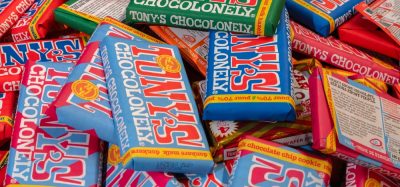The Food Fortress: A story of success for others to follow?
- Like
- Digg
- Del
- Tumblr
- VKontakte
- Buffer
- Love This
- Odnoklassniki
- Meneame
- Blogger
- Amazon
- Yahoo Mail
- Gmail
- AOL
- Newsvine
- HackerNews
- Evernote
- MySpace
- Mail.ru
- Viadeo
- Line
- Comments
- Yummly
- SMS
- Viber
- Telegram
- Subscribe
- Skype
- Facebook Messenger
- Kakao
- LiveJournal
- Yammer
- Edgar
- Fintel
- Mix
- Instapaper
- Copy Link
Posted: 1 May 2024 | Professor Chris Elliott | No comments yet
Here, Professor Chris Elliott outlines an industry-academia partnership in Ireland that has been created to tackle food contamination, setting a model for other sectors to follow.


Quite often my articles for New Food warn of impending problems in terms of feed and food contamination brought about by accidental or deliberate acts across complex supply chains. However, on this occasion I wanted to share what myself and many others involved believe it a great example of a success story involving confidential data sharing and a very strong partnership between industry, academia and government.
Like many innovative initiatives it started with a crisis that needed a long-term solution. Back in 2008 and 2009 the Island of Ireland was hit with the dioxin crisis where a small quantity of the toxic chemical entered into the feed supply chain and caused havoc. A worldwide recall of Irish pork products resulted, massive issues for animal welfare and the closures of many businesses. Early estimates put the cost of the crisis in excess of £100M.
As with all crises, there was the immediate need to deal with multiple issues and the need to try and find someone to blame. Thankfully following this period there was a concerted effort to try and find some way to prevent future incidents of this nature occurring. This was led by a small number of future thinking CEOs from feed and nutrition companies based in Northern Ireland. They came to me to help find a way of using a science and technology-based approach to determine and manage feed contamination risks going forward.
What resulted was the formation of the ‘Food Fortress’, a not for profit company that co-ordinated the collection of feed samples for testing for key contaminants identified in a risk assessment conducted by staff within the Institute for Global Food Security. At the outset there were five companies involved but this has now grown to around 90 different businesses based in Northern Ireland, the Republic of Ireland and Great Britain. The scheme currently manages an amazing seven million tonnes of feed materials each year and this keeps rising year on year.
On the 10th anniversary of the implementation of the fully fledged Food Fortress monitoring programme a briefing session was held for the Guild of Agricultural Journalists. How the food industry worked in partnership with academics and various government agencies and departments was described and discussed. Such partnerships are rare and how they work in an operational sense if very important to know to allow others to follow the successful model that has been build over a decade or more.
There are other important learnings from the work of the Food Fortress. The substantial database of test results has been built over the years and now the scheme is leveraging this with leading experts in Artificial Intelligence (AI) to help build even stronger early warning systems about future feed contamination issues. We hope to publish this work in a leading scientific journal later this year. We are also seeing that the database can be used to support reducing the environmental footprint of the livestock sector in Northern Ireland. This is especially related to the data accumulated on mycotoxins exposure of farm animals over a long period of time. Again, we plan to publish this work.
I have presented the work of the Food Fortress on many occasions over the years and this has always been met with a lot of interest but uncertainty of how other agriculture and food sectors can follow the model developed. However, recently some excellent discussions have been had with an important group of businesses who have equally complex challenges around the contamination of materials to the feed sector. Let’s hope that in the not too distant future I can inform New Food readers that either the existing Food Fortress scheme has expanded or that a very similar scheme is in place to deal with the ever growing issues of feed and food contamination.
Related topics
Food Safety, Quality analysis & quality control (QA/QC), Supply chain









